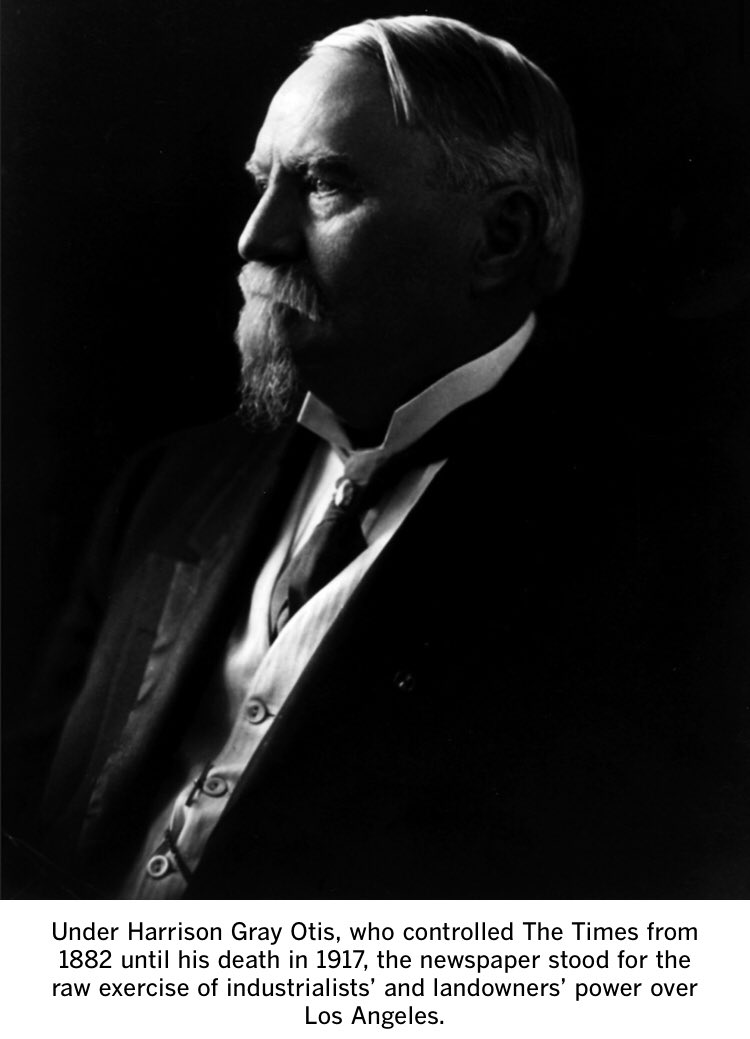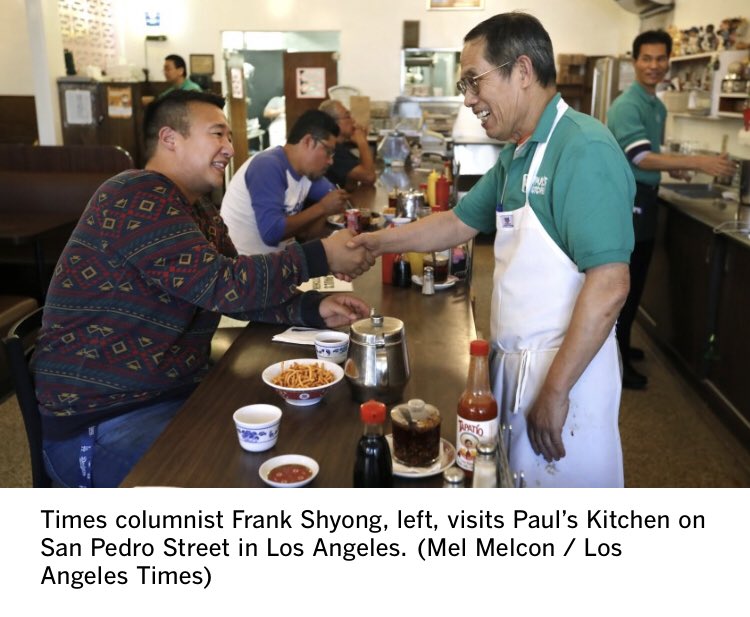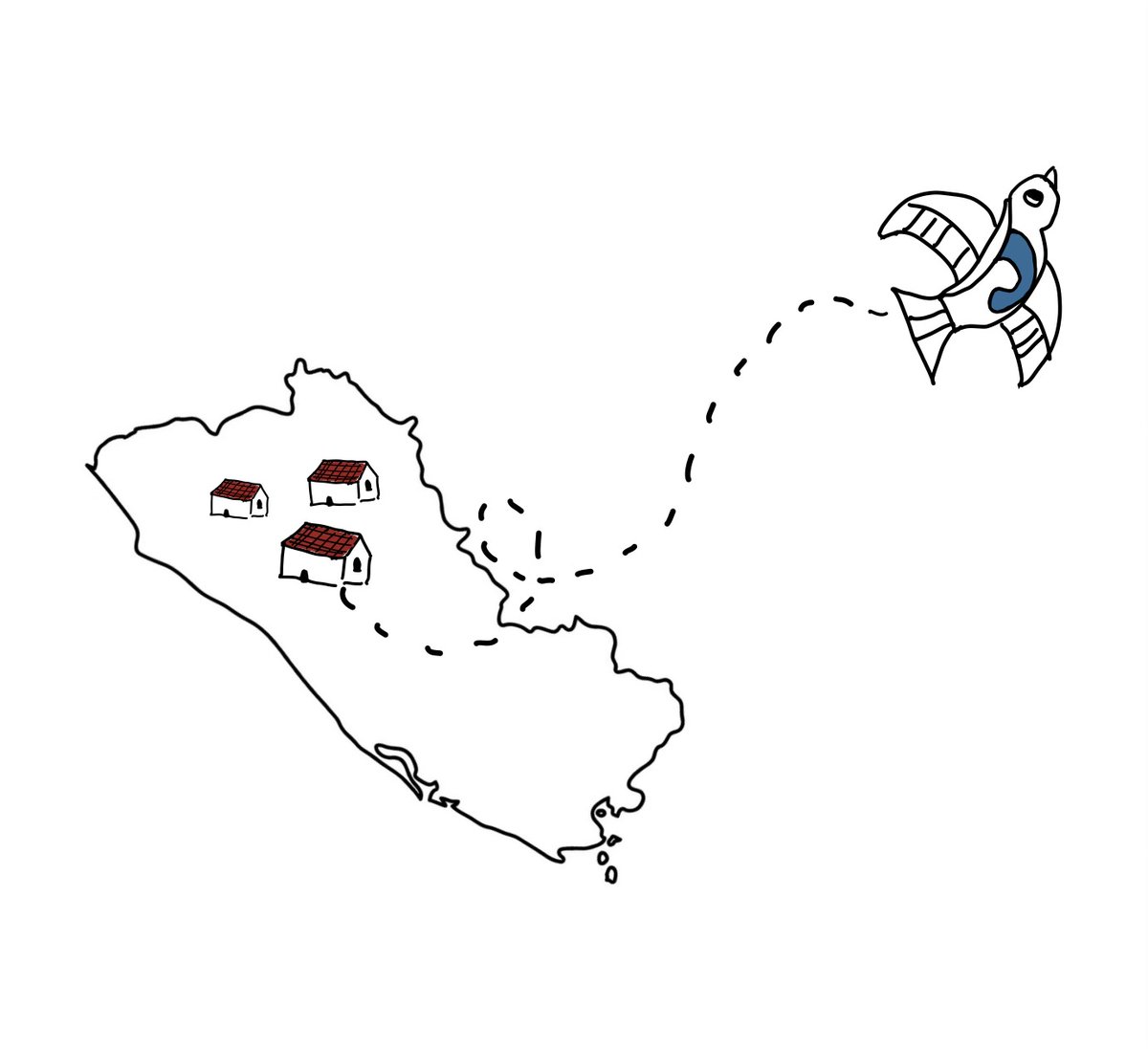Nationwide, newsrooms have been facing a reckoning over just how white their ranks are & have historically been.
Today the @latimes launches a project examining its record of racism, failures.
“There’s a lot of rawness & a lot of anger & it’s justified”
Today the @latimes launches a project examining its record of racism, failures.
“There’s a lot of rawness & a lot of anger & it’s justified”
Through a series of essays, the @latimes will take an unflinching look at its pages & its newsroom, examining where it failed readers, where it made progress & where it must still go.
Grateful to the @LATBlackCaucus @LATLatinoCaucus for pushing to make this examination happen.
Grateful to the @LATBlackCaucus @LATLatinoCaucus for pushing to make this examination happen.

For at least its first 80 years, the @latimes was an institution deeply rooted in white supremacy & committed to promoting the interests of the city’s industrialists & landowners
An examination of @latines failures on race, our apology and a path forward
google.com/amp/s/www.lati…
An examination of @latines failures on race, our apology and a path forward
google.com/amp/s/www.lati…
Far from a mission of “comforting the afflicted and afflicting the comfortable,” Harrison Gray Otis’ newspaper, the @latimes, stood for the raw exercise of power & he used it to further a naked agenda of score settling, regional boosterism, economic aggrandizement & union busting 

After the war, the @latimes became an uncritical mouthpiece for Washington as it covered the Eisenhower administration’s Operation Wetback, which used military-style tactics to deport Mexican migrants, some U.S. citizens, who had been invited north to do agricultural labor. 

A powerful essay by @GeBraxton who covered the 1992 riots. He & other Black reporters were deployed because sending white writers was considered dangerous
Greg hoped his work would lead to a promotion. Instead it led to decades of hurt & his own reckoning lat.ms/3icJNn3
Greg hoped his work would lead to a promotion. Instead it led to decades of hurt & his own reckoning lat.ms/3icJNn3
What’s often lost in the “coverage of the fiery & impassioned issue of race in this country is the recognition of the humanity behind the hurt, the complex cultural interactions in workplaces... Those wounds may recede with the passage of time, but the scars remain” — @GeBraxton 

Over 139 years, @latimes readers have seen in their paper the best & worst of how the media have covered Latinos
This summer Latinos banded together, with our Black colleagues, to demand equity & representation from a paper that had long failed them lat.ms/347XjDw
This summer Latinos banded together, with our Black colleagues, to demand equity & representation from a paper that had long failed them lat.ms/347XjDw
.@GustavoArellano describes our 1st @LATLatinoCaucus meeting via Zoom: “No one knew what to expect..There were immigrants and third-generation Chicanos. Mexican Americans and Central Americans and Caribbeans and South Americans. Old and young, veterans and newcomers like myself.” 

In 1881, the @latimes ran an article that told readers that “Chinamen” believe in goblins & live in grimy rooms reeking of “mysterious odors.”
Today, Asian Americans make up 14.6% of @latimes staff, the largest proportion among major U.S. papers. lat.ms/3cBDkRy
Today, Asian Americans make up 14.6% of @latimes staff, the largest proportion among major U.S. papers. lat.ms/3cBDkRy
Reading through a century of @latimes stories about Asian American reveals persistent stereotypes. No matter how long they’ve been in the U.S., fighting wars, paying taxes, contributing to the nation, they were still often seen as foreigners, exotic at best, sinister at worst.
How to do better? We can’t rely only on Asian Americans to cover the full breadth of Asian America. One idea is for reporters across the paper — Asian American or not — who know and love certain communities to keep an eye on them — @TeresaWatanabe 

The great @SandyBanksLA reflecting on her decades of journalism at the @latimes:
”In the process, I saw firsthand how stereotypes can develop and infiltrate a newsroom, stigmatizing entire communities.”latimes.com/opinion/story/…
”In the process, I saw firsthand how stereotypes can develop and infiltrate a newsroom, stigmatizing entire communities.”latimes.com/opinion/story/…
“It’s not always easy to be a reporter of color when ur default audience & the institutional perspective are perceived 2 b white. It’s hard on the psyche 2 b perpetually reminded that some people won’t ever respect u, yet ur job is to try 2 understand and tell their stories, too” 

Make no mistake. The @latimes has a long way to go to correct the ugliness of the past.
Today, our masthead — the 14 leaders who make every major decision about our newsroom and coverage — does not include a single Latino.
This is in L.A., where half the community is Latino.
Today, our masthead — the 14 leaders who make every major decision about our newsroom and coverage — does not include a single Latino.
This is in L.A., where half the community is Latino.

• • •
Missing some Tweet in this thread? You can try to
force a refresh





